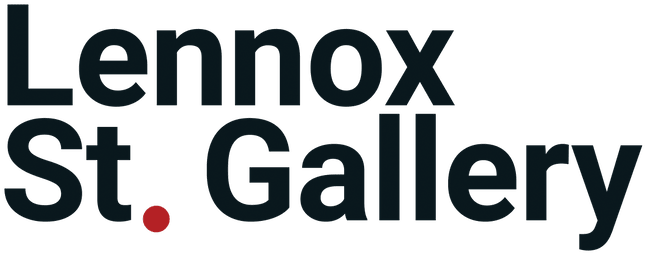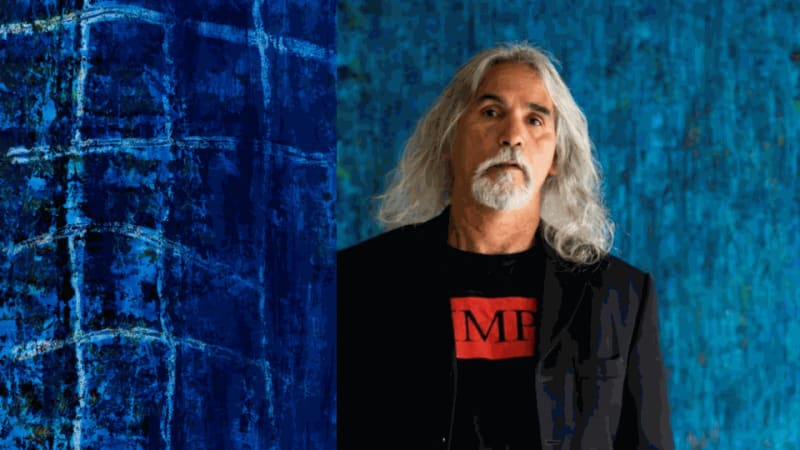"For me I just chuck up from within, a detoxification from within me coming out onto the canvas. I say to people I can’t plan to paint because its not me, I don’t know what I’m going to paint and I just keep going with layers upon layers upon layers and then it just happens. I get an idea of colour so I throw some colour on and then another colour just speaks and it just happens. I paint how I feel.Twenty layers on every stage and when I get to the end sometimes I go nah, and throw water on it, peel it back and restart. I just see things in my head and colours and then I just throw them on to the canvas and they come together how they do." - Richard Young
Richard first sees himself as a husband, father and grandfather. Through his grandparents, on both paternal and maternal sides, Richard descends from First Nations peoples from across Victoria, from Lake Condah in the West, Mooroopna in the North, and Gippsland to the South and the East. He is a part of a far-flung dynastic network, which includes politicians, artists, writers, sportspeople, and musicians.
From his parents of Gunnai, Yorta Yorta, and Gunditjmara descent, Richard continues drawing inspiration from the traditions of his family and ancestors with a deeper connection with the Gunnai, who are the traditional owners of Gippsland, from the coastal areas to the southern slopes of the Victorian Alps.
Various forms of artistic expression, including writing and painting, were of utmost importance to Richard from the young age. He grew in his understanding of art from his Uncle Ray Thomas and was encouraged to explore and grow his practice from his brother-in-law Kevin Williams, as he began painting and exhibiting professionally. The powerful visual vocabulary and aesthetic acumen of his works is garnering a wider curatorial support and collectors’ following, culminating to date in Gunnai Vibrations, the solo presentation of the artist’s works at Gippsland Art Gallery in Sale.
Richard is an advocate for increasing the understanding of knowledge focusing on the distinct difference between community groups and traditional forms of cultural structures. Together with his wife Judith their children and extended family members, they deliver Spirit of the Brand workshops from their Warrandyte studios, Young continues to educate and bridge fragmented societies.
The connection to the Country is foremost in Richard’s paintings. Elements of the traditional geometric designs of his Gunnai heritage cover his paintings in cross-hatch patterns. In others, they appear as a series of deep grooves and gashes to convey the painful experiences of Gippsland First Nations communities as well as the destruction of the land.
However, messages of regeneration prevail. Just like the native vegetation takes over the abandoned mines or burnt-out forests, or just like the skin grows over a wound, paint fills the grooves to heal, replenish, and regenerate.
Catharsis is a major theme within Richard’s work. Both from a personal, environmental and communal standpoint, the artist juxtaposes the pain with healing, the burning with regeneration, and the destruction with reconciliation. Stressing the importance of progression within his works, he establishes an optimistic landscape for Aboriginal artist and groups to see an inclusive and vibrant future for Australia.
The creation of each work is a physical, energetic, and visceral process. Paint is rarely applied with the brush, if at all. The element of chance and randomness, however controlled, informs the creative impulse. Pigments are dripped, splattered, or thrown into the air, forming its own rhythmic patterns, directed by gravity and magnetic fields. Canvasses either rest on the floor or are pinned to the outer walls of the studio, exposing them to the elements and making them one with nature. The surfaces are gouged and scraped back with the hand-sander to reveal the layers of paint, the primers, and bare canvas underneath. The process is repeated again until that ephemeral feeling of completion is attained.

